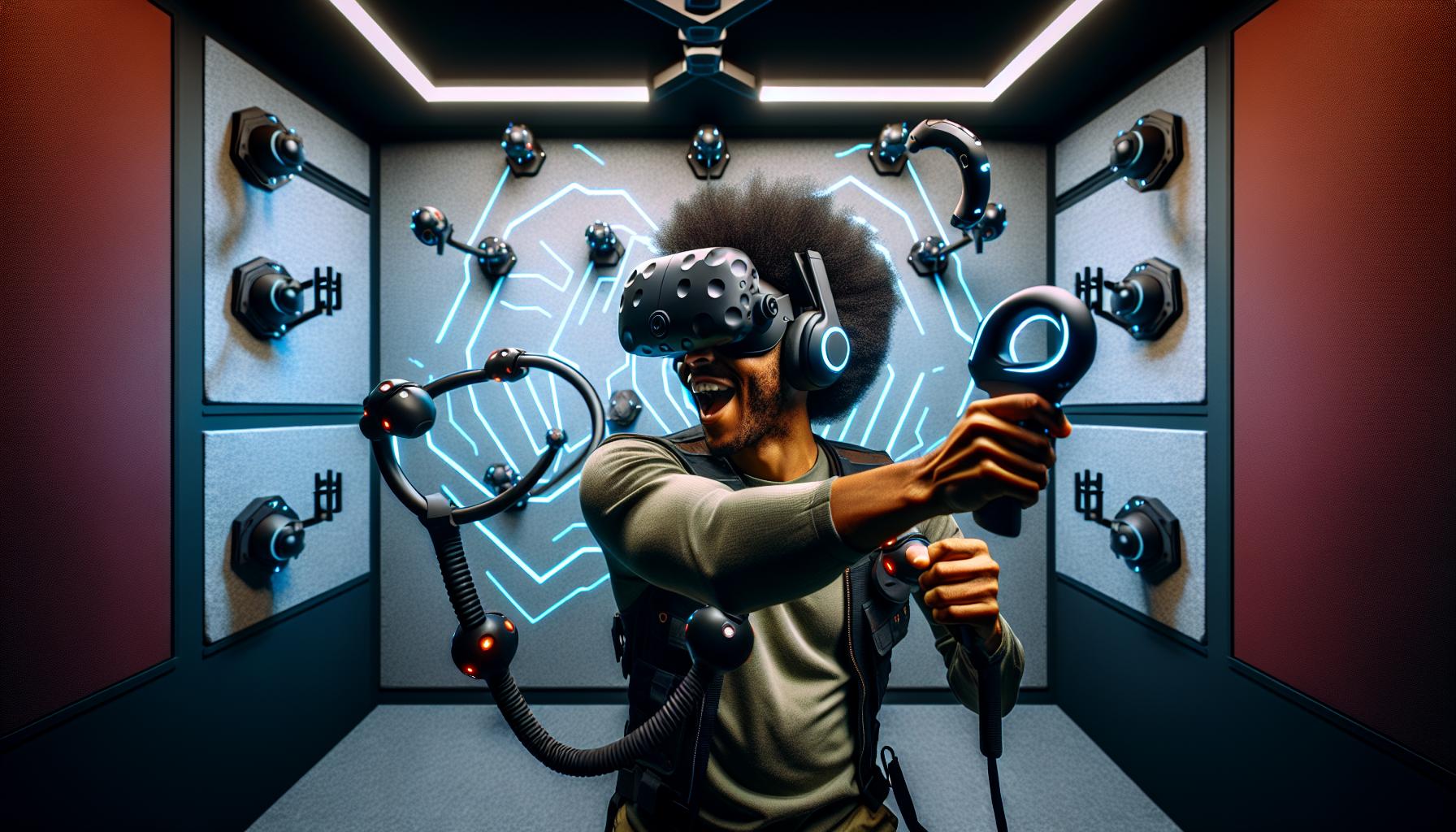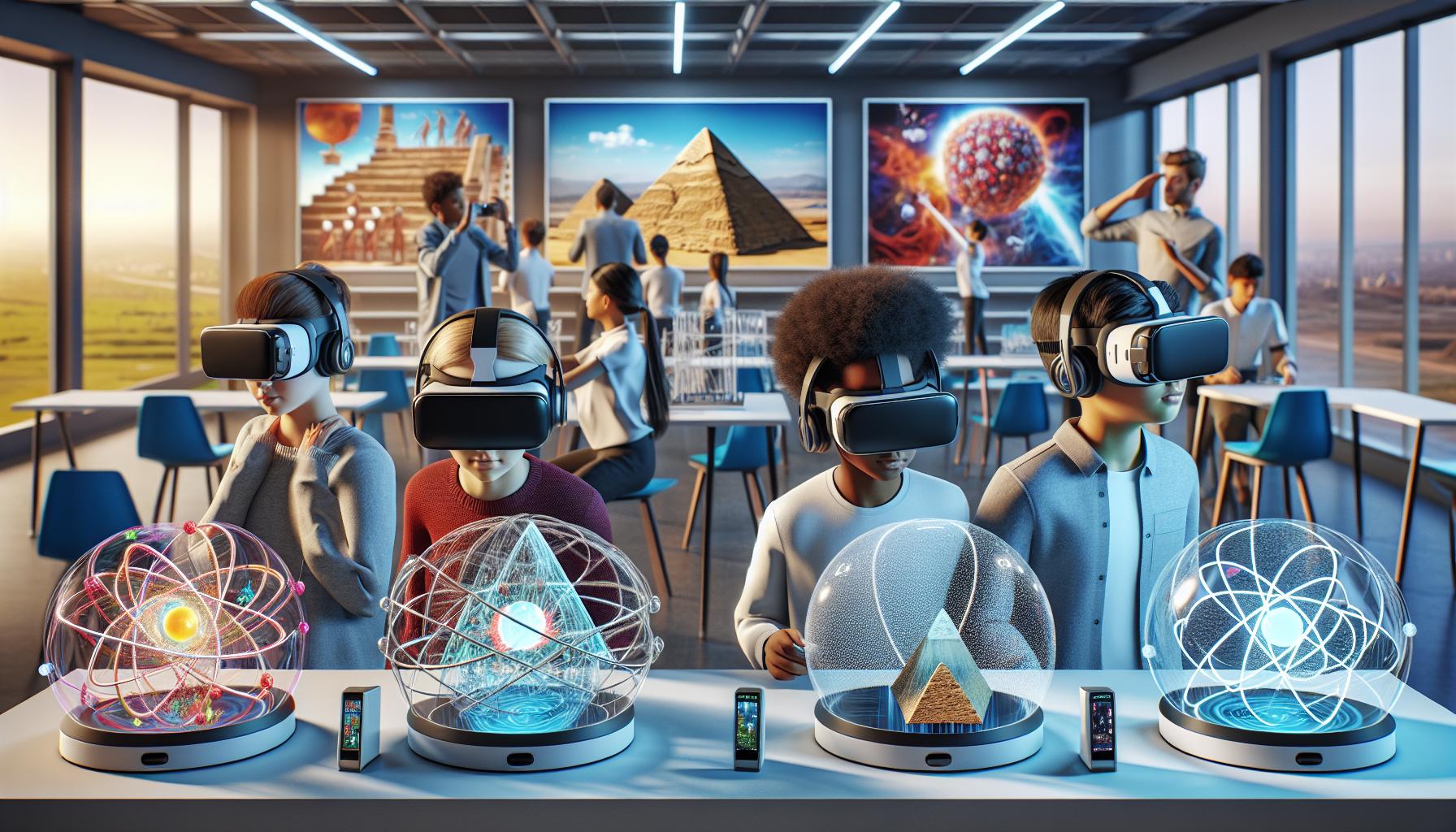Key Takeaways
- Transformative Experience: Virtual reality platforms revolutionize digital content consumption by immersing users in lifelike environments, enhancing entertainment, education, and social interaction.
- Key Platforms: Popular VR platforms like Oculus, HTC Vive, PlayStation VR, and Valve Index each offer unique features, catering to various users and preferences in gaming and other industries.
- Immersive Features: High-quality graphics, advanced audio, and motion tracking create deeply engaging experiences, allowing users to interact naturally within virtual environments.
- Diverse Applications: VR platforms support various fields, such as education for interactive learning, healthcare for medical training simulations, and real estate for virtual property tours.
- Advantages of VR: Enhanced learning retention and therapeutic uses like pain management and exposure therapy are among the notable benefits of virtual reality platforms.
- Challenges to Adoption: Technical limitations, user accessibility issues, and the high cost of hardware pose significant challenges that need to be addressed for broader adoption of VR technologies.
Virtual reality platforms are transforming the way people experience digital content. By immersing users in lifelike environments, these platforms create opportunities for entertainment, education, and social interaction that were once unimaginable. As technology advances, the potential for virtual reality continues to expand, captivating a diverse audience eager to explore new worlds.
From gaming enthusiasts to educators, individuals are discovering the unique advantages of virtual reality. It offers a chance to engage with content in an interactive way, enhancing learning and enjoyment. As more developers invest in these platforms, the future looks promising, with innovations that could redefine how society interacts with technology.
Virtual Reality Platform
Virtual reality platforms serve as frameworks facilitating immersive digital experiences. They integrate hardware and software to allow users to navigate 3D virtual environments. Many key platforms include Oculus, HTC Vive, PlayStation VR, and Valve Index, each offering unique features and capabilities.
- Oculus: Oculus platforms, such as Oculus Quest and Rift, provide user-friendly interfaces and standalone capabilities, appealing to both casual and hardcore gamers. They support various VR applications, enabling seamless integration of games and social experiences.
- HTC Vive: HTC Vive excels in high-quality graphics and precise tracking. Its room-scale VR functionality allows users to move freely within their physical space, enhancing immersion across applications like gaming and virtual tourism.
- PlayStation VR: PlayStation VR connects with PS4 and PS5 consoles, delivering a broad array of exclusive titles. Its affordability and compatibility make it accessible for a diverse audience, further popularizing VR gaming.
- Valve Index: Valve Index focuses on premium experiences with high refresh rates and superior motion tracking. It appeals to enthusiasts looking for advanced technology in gaming and VR simulations.
These platforms support various industries, including education, healthcare, and real estate. For example:
- Education: VR platforms provide interactive learning environments, enabling students to explore complex subjects through immersive simulations.
- Healthcare: Medical professionals use VR for training simulations, improving surgical skills in a risk-free setting.
- Real Estate: Agents utilize VR for virtual property tours, allowing clients to experience listings remotely.
With the rapid evolution of VR technologies, platforms continuously enhance usability, accessibility, and content diversity, contributing to broader applications in daily life.
Key Features Of Virtual Reality Platforms

Virtual reality platforms offer various features that enhance user engagement and interaction. These features contribute significantly to the immersive experiences users encounter in digital environments.
Immersive Experiences
Immersive experiences define the core appeal of virtual reality platforms. High-quality visuals create realistic environments that captivate users. Advanced audio technologies produce spatial sounds, enhancing the sense of presence. Motion tracking capabilities allow users to navigate environments through natural gestures. For example, room-scale tracking enables movement across large spaces, increasing realism. These immersive experiences promote deeper emotional connections with the content.
User Interaction
User interaction plays a vital role in virtual reality platforms. Intuitive controls facilitate seamless navigation within VR environments. Hand-tracking and motion-sensing technologies respond to user movements, creating a more natural interaction. For instance, platforms like Oculus use touch controllers to enable precise actions, such as grasping or throwing. Multiplayer functionalities foster collaboration and competition, allowing users to engage with others. These interactive elements greatly enhance user engagement and satisfaction.
Content Variety
Content variety significantly enriches virtual reality platforms. These platforms host diverse content types, including games, educational materials, and training simulations. Premium titles from various genres ensure that users find their preferred experiences. Educational applications provide immersive learning environments, making complex topics more accessible. Platforms frequently partner with developers to expand their libraries, introducing fresh content regularly. This variety meets different user interests and preferences, enhancing overall platform appeal.
Popular Virtual Reality Platforms

Virtual reality platforms offer diverse features and experiences, catering to a wide range of users and interests. Below are some of the most popular platforms in the market.
Oculus Rift
Oculus Rift emphasizes user-friendliness and standalone capability, appealing to both casual and hardcore gamers. The Rift’s intuitive interface allows for seamless navigation, while its library includes numerous immersive games and applications. With advanced tracking technology and high-resolution displays, the Rift enhances the overall sense of presence within virtual environments. Oculus also supports cross-platform play, further expanding its user base and promoting community engagement.
HTC Vive
HTC Vive is renowned for its high-quality graphics and room-scale VR functionality. The device utilizes precise motion tracking, delivering an unparalleled immersive experience. Users can move freely within a defined physical space, making interactions within virtual environments feel more natural. Additionally, HTC Vive includes access to a strong catalog of titles, including exclusive games that leverage its advanced technology. The platform’s compatibility with SteamVR enhances its offerings, providing users with a larger array of content and applications.
PlayStation VR
PlayStation VR connects seamlessly with PlayStation consoles, delivering an extensive selection of exclusive titles. This device offers an affordable entry point into virtual reality for console gamers. With its easy setup, PlayStation VR provides immediate access to an array of games and experiences tailored for diverse audiences. The platform’s motion controllers and headset design prioritize comfort, allowing for prolonged usage. Regular software updates and an expanding library ensure that PlayStation VR remains relevant in the fast-evolving VR landscape.
Advantages Of Virtual Reality Platforms

Virtual reality platforms offer multiple advantages across various domains. These benefits enhance user experiences and provide innovative solutions to longstanding challenges.
Enhanced Learning
Enhanced learning occurs through immersive educational experiences that stimulate engagement and retention. Participants, such as students and professionals, benefit from interactive simulations that mimic real-world scenarios. In subjects like history, VR allows learners to explore ancient cities as if they are physically present. In science, students can conduct experiments in safe, virtual environments, gaining hands-on experience without the associated risks. Studies indicate that immersive learning environments improve knowledge retention by up to 75%, making VR a powerful tool in education.
Therapeutic Uses
Therapeutic uses of virtual reality platforms have shown promise in mental health treatment and rehabilitation. Clinicians employ VR to create controlled environments for exposure therapy, helping individuals confront phobias and traumatic experiences. For example, patients with PTSD may engage in simulated scenarios that facilitate gradual desensitization. Additionally, VR aids in pain management, allowing patients to immerse themselves in relaxing virtual environments during procedures. Research highlights that up to 50% of patients report reduced pain perception when utilizing VR during medical interventions, making it an effective complement to traditional therapies.
Challenges Faced By Virtual Reality Platforms
Virtual reality platforms encounter several challenges that hinder their widespread adoption and effectiveness. Addressing these limitations improves user experience and expands the technology’s potential.
Technical Limitations
Technical limitations present significant obstacles for virtual reality platforms. High-performance hardware, essential for optimal VR experiences, remains expensive, creating a barrier for many potential users. Limited battery life on standalone devices restricts usage duration, necessitating frequent recharging. Additionally, not all VR content is compatible across platforms, leading to fragmented experiences. Latency issues can occur, affecting responsiveness and user immersion, particularly in fast-paced environments. Moreover, inadequate field of view can diminish realism, limiting the sense of presence that users seek.
User Accessibility
User accessibility issues continue to challenge virtual reality platforms. Many VR headsets and accessories can be physically uncomfortable, especially during prolonged use, discouraging extended engagement. Additionally, users with mobility impairments may find certain applications difficult to navigate, excluding a portion of potential audiences. The requirement for dedicated space limits usability in smaller environments, rendering some systems impractical for users with limited space. Finally, the complexity of setup and operation can intimidate new users, particularly those unfamiliar with technology, hindering VR’s growth and adoption among mainstream audiences.
Powerful Tool Across Various Sectors
The evolution of virtual reality platforms is reshaping how individuals interact with digital content. As technology advances and becomes more accessible the potential for immersive experiences continues to expand. With applications spanning entertainment education and therapy VR is proving to be a powerful tool across various sectors.
Despite the challenges such as high costs and technical limitations the ongoing innovations in VR technology promise to enhance user experience. As developers prioritize usability and content diversity the future of virtual reality looks promising. This transformation not only enriches personal experiences but also paves the way for groundbreaking solutions in everyday life.